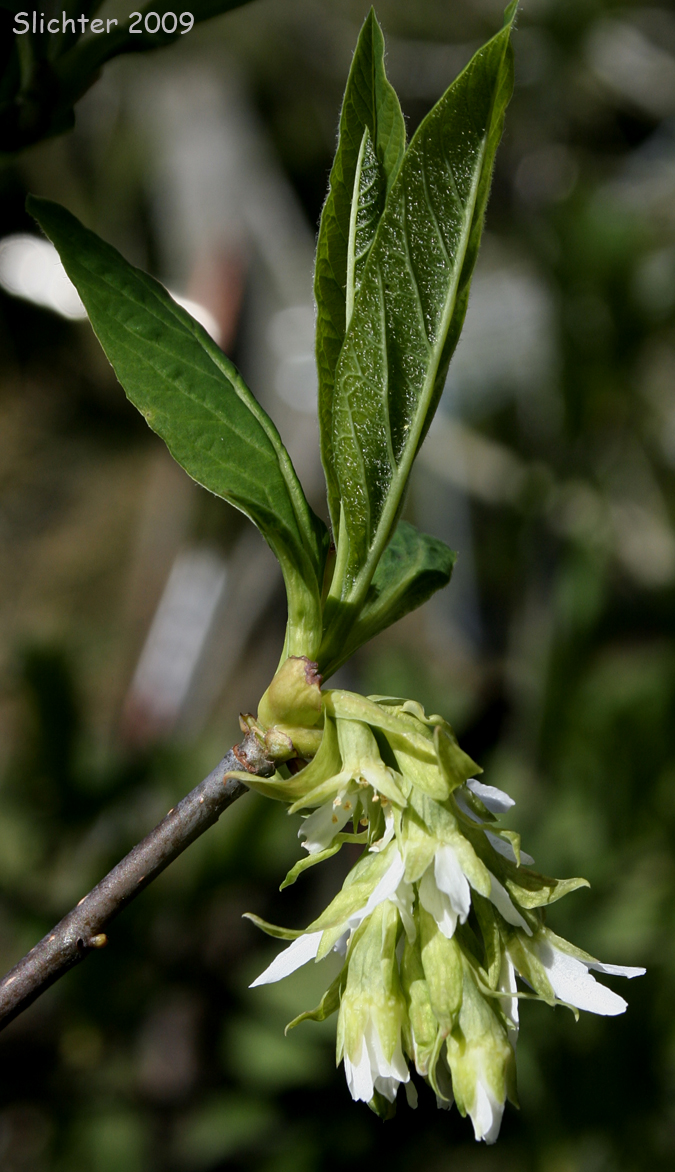

Osoberry is a deciduous shrub to small tree with one to several erect or ascending stems to 5 meters high. The bark on young twigs and older branches is smooth, deep reddish-brown with round, gray pores. The buds are bright green in winter and then turn red by early spring. The leaves are simple with pinnate venation, and they alternate on the stems. They are bright green above, paler and waxy on their undersides. The leaves are oblong or lance-shaped and range from 5-15 cm long and 2-4 cm wide. The leaf margins are entire. Young leaves taste like cucumber, while the older leaves become bitter. Young leaves stand upright or at a 45 degree angle from the twig.
Osoberry is one of the earliest shrubs to flower in the spring, often flowering at low elevations by early March. Flowering precedes or coincides with the emergence of the leaves. The flowers are creamy greenish-white, 5-petaled, and hang in clusters from the tips of the stems. Female flowers have a pleasant odor while the male flowers smell like cat urine. The fruits are yellowish-red turning deep purple upon maturation.
The fruits are eaten by birds and small mammals. They are often used as nesting habitat by small songbirds. Native Americans ate the edible fruits either fresh or dried. They also made preserves from the fruits. The leaves were consume in small amounts in salads.
Osoberry may be found in moist, open woods, along the edges of open woods, and along roadsides or streambanks.
Osoberry may be found from British Columbia south to the west of the Cascades to the west side of the Sierra Nevada in California.
It may be found in the Columbia River Gorge between the elevations of 100'-1600' from the western approaches to the gorge to as far east as Dog Mt.